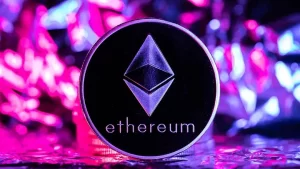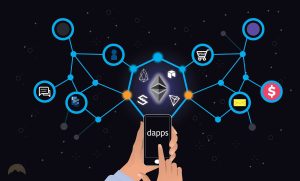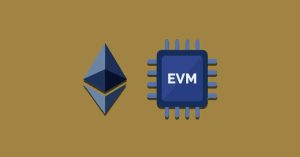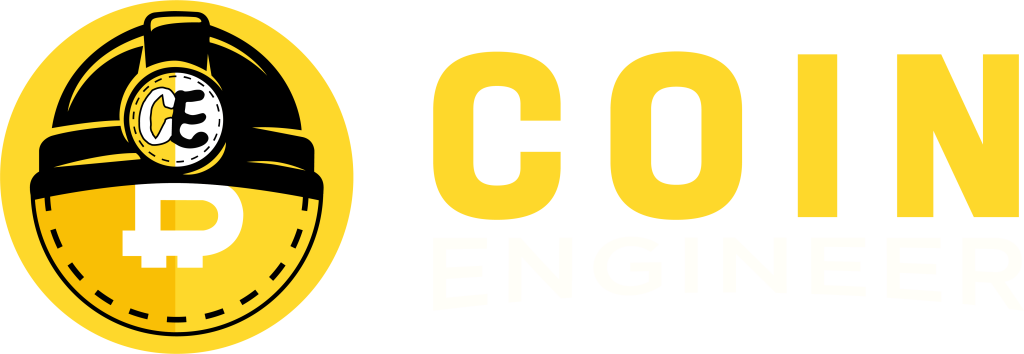Ethereum network is the second largest cryptocurrency next to Bitcoin and has an almost 230 billion dollars market cap. Ethereum is also a cryptocurrency like Bitcoin, but unlike Bitcoin, it is not just a digital asset.
Co-Founder of Ethereum Blockchain Vitalik Buterin said:
“When I saw it I noticed that this name was more beautiful for me than other alternative names. I think like that the main reason of this is that “Ethereum” sounds so good and the word contains “ether”. Ether is phenomenon that provides for gliding the light on the space.

Ethereum’s target is being a world computer. The “computer” is working thanks to the blockchain network and its own Virtual Machine. We said that Ethereum isn’t just a digital asset, unlike Bitcoin. By any definition, Ethereum is the world. The network is available for building new apps on its. Furthermore, the App has a new feature: Decentralization.
That’s why the apps convert to dApps (decentralized apps). Right now Ethereum is the most decentral blockchain network. Because the network has a completely decentral structure. The transactions on Ethereum are kept in almost 500.000 nodes. That’s why Ethereum can provide its decentralized structure.
Every user can deploy their smart contract on the Ethereum blockchain. Even they build their app thanks to the feature. Here, it’s Ethereum’s difference.
What Is A Smart Contract?
Smart contracts are the fundament of the Ethereum blockchain. The network building on them. Smart contracts are written using the Solidity programming language. If you don’t want what is a smart contract or how it works, don’t worry. Let’s imagine 2 people named Alice and Bob. Alice wants to send money or information to Bob. But she needs third-party payments or organizations for doing the transactions.
Here, they can do that thanks to smart contracts. Because the smart contract isn’t the third party. They just need a wallet and smart contract. But, at the same time, they should keep an eye on when choosing smart contracts. Because some contracts’ owners may be malicious.
You might also like: What Is Smart Contract?

“Smart Contracts” term was created by Nick Szabo in 1994. They are similar to Automats. These machines also work that. You choose a product, it says the relevant price and you pay for that. And then you click the button and it gives the product that you wanted.
What Is Token Standart? Which Standarts Are Most Common?
First of all, we should mention EIPs (Ethereum Improvement Proposal). They are proposals for the development Ethereum community and technology. If there are some changes to the network, it is present to the community as EIP.
Some EIPs are related to standards, they are presented as Ethereum Request for Comment (ERC). All standards’ names are inspired by it: ERC-20, ERC-1155, ERC-721, etc.
- ERC-20: The standard was designed for voting, staking, and digital currency tokens.
- ERC-721: Usually this standard is used by unique, non-fungible tokens (NFTs).
- ERC-777: This token standard is changed and developed ERC-20
- ERC-1155: The standard contains both of them fungible and non-fungible tokens.

What Is dApps (Decentralized Applications)?
You think Decentralized Apps are like normal apps on Web 2.0. Dapp is an application for creating connections between users and servers, but they haven’t a data center, unlike Web 2.0 applications. Smart Contract provides a decentral connection. Additionally, all dApps work as P2P (person-to-person).
They have pure structure. In this manner, dApps can use smart contracts which they were written by another or unknown deployer(owner). Apps and dApps are similar. A difference is in the backend. Normal applications use the backend where all data is collected on the sole center. But dApps don’t collect their data as it is. They can’t do that. Because their backend is blockchain and blockchain is distributed ledger technology. That’s why data don’t collect in one center.
Generally, Web 2.0 applications’ structure is that: Front-End → API → Database. But Web 3.0 or Decentralized applications: Front-End → Smart Contract → Blockchain.

Ethereum Virtual Machine (EVM)
EVM is the fundament of the Ethereum blockchain’s operation structure. We can think of the machine as a presence that was sustained by thousands of computers. EVM is the processor. Generally, Virtual Machines are converted bytecodes. EVM is a “supporter” to users for reducing problems on the network.

Ethereum has 2 types of accounts: External Owned Accounts (EOA) and Contract Accounts. Account abstraction wants to achieve that EOAs and Contract accounts work similarly. EOAs are managed by private keys.
Developers write codes and created smart contracts using Solidity. At this time, the codes are bytecode, so they are non-understandable to readers. EVM is converting them to bytecodes, after that, they are being readable.
What Is Gas Fee On Ethereum?
The gas fee is payment for executing transactions on the Ethereum network. Gas fees are paid using Ethereum Network’s native token ETH. Usually, gas fees are calculated as gwei. 1 gwei equals 0.000000001 ETH.
Gas fees are paid to network validators. Validators have nodes on the Ethereum blockchain. They verify users’ transactions. In return, users should pay relevant amounts to them. Right now Ethereum has Proof-of-Stake (PoS) algorithm. But its first algorithm was Proof-Of-Work(PoW). Right now they should have a minimum of 32 ETH to be validators. But validators were called miners when the network has a PoW algorithm. They should mine for be validators node.
On 15 September 2022 was realized on the Ethereum Network Merge Upgrade. Ethereum was a PoS blockchain thanks to the upgrade.

There’s a gas limit. Users can use the function for determining the limit to gas payments. Standard ETH transfer is available for 21.000 gas limits. For example, if you set a 50.000 gas limit, EVM is using 21.000 gas and refunds its piece of 29.000.
Especially in bullish seasons gas fee ratios are increasing. Because so many users’ wants to use the network. In this case, gas fees are increasing. The completed transaction has been some users who are paying large amounts as fees. Because validators verify these users’ transactions.
Ethereum’s Scalability Problem
Ethereum is a decentral blockchain, so, your data is reliable on there. But the network isn’t scalable. The scalability ratio is measured for TXS power. If blockchain produces blocks fast, so it is scalable. But Ethereum isn’t.
So, can Ethereum produce that? Yes, Ethereum can do it, but in this case, it must produce smaller blocks. Because nodes should download these data. If blocks have huge sizes, and Ethereum produce them fast, nodes can’t download and keep them on their device. And then, the nodes’ count will reduce. But we don’t want it as blockchain enthusiasts.
Right now, there are some solutions to the problem: Rollups, Danksharding, Sharding, ZeroKnowledge Proof (ZKP), Sidechains, etc.
Rollups solve the problem of sending zkProofs to the Ethereum Chain. In this case, Ethereum’s “noisy” will reduce. Rollups have 2 types: Optimistic and zkRollups. Optimistic Rollups just create proofs and they don’t convert them zkProof and send them to Ethereum. But zkRollups are using cryptographic methods. That’s why Optimistic Rollups are faster than zkRollups.
Danksharding is the initial phase of the Sharding procedure. The phase is preparation. The sharding phase wants to separate chains. In this case, all nodes aren’t busy at the same time. In there Data Availability helps for increasing scalability. So, every node can verify the transaction using a little piece.
ZeroKnowledge Proof (ZKP) technology is providing security and scalability at one time. Transactions will be completed using proofs, but the proofs don’t contain any knowledge or information about the processes.
Sidechains want to be parallel workers for the Ethereum chain. They are working and want to reduce Ethereum’s load as Rollups. Right now the most common sidechain is Polygon. And the network’s native token is MATIC.
You can present your thoughts as comments about the topic. Moreover, you can follow us on Telegram, Twitter, and YouTube channels for the kind of news


